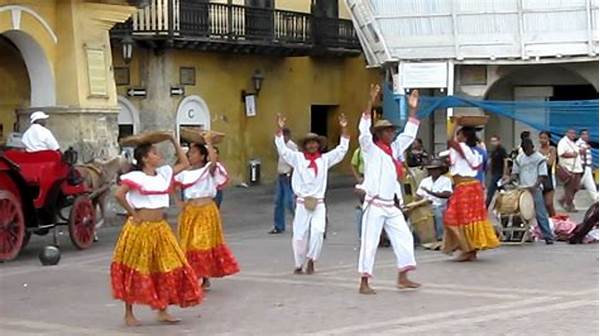Cumbia, a musical and dance tradition with deep roots in Latin America, offers an impressive array of rhythmic variations that continue to captivate audiences worldwide. Why settle for the ordinary when you can dance to the exotic, pulsating beats that celebrate diversity? The rhythmic diversity in cumbia genres provides a unique musical experience that engages listeners with its infectious groove. From its origins on the Caribbean coast of Colombia to its evolution across the continent, cumbia has embraced a variety of influences, creating an irresistible fusion that keeps expanding. This genre dares us to explore and appreciate music beyond borders, inspiring us to embrace the vibrant cultural tapestry it spins.
Read Now : Best Merengue Music Playlist
Exploring Rhythmic Intricacies
The rhythmic diversity in cumbia genres is more than just a musical phenomenon; it’s a symbol of cultural evolution. At its heart, cumbia boasts an unstoppable beat that has transcended regional boundaries. You’ve got the classic Colombian cumbia with its unmistakable gait, the urban cumbia villera shaking up Argentinian streets, Mexican cumbia sonidera turning heads with its electronic flair, and Chilean cumbia that brings its unique twist with catchy melodies. Each variation is like its own dance partner, inviting you to glide, step, and spin. With rhythmic beats that stay true to their roots yet blend in new twists, the rhythmic diversity in cumbia genres showcases how creativity and tradition can dance together in perfect harmony. So, the next time you find yourself tapping your feet to a cumbia beat, remember you’re part of a vibrant, evolving story.
The Groovy Spectrum
1. Cumbia’s got the beats to make your feet move, showcasing the rhythmic diversity in cumbia genres.
2. Dive into the syncopated rhythms that keep cumbia fresh and exciting.
3. From Colombia to Argentina, each style has its spicy twist on rhythmic diversity.
4. Discover how the beat variations make each cumbia genre uniquely flavorful.
5. Don’t just hear the rhythm; feel the soul of rhythmic diversity in cumbia genres.
The Cultural Mosaic
It’s pretty wild how rhythmic diversity in cumbia genres paints a vivid picture of cultural fusion. Imagine the classic Colombians beating drums, blending seamlessly with indigenous flutes, and you get why it’s pure magic. As this genre hits different countries, the rhythms adapt, taking new forms that speak to local vibes while retaining the core. Argentine cumbia villera’s urban edge and Mexico’s sonidera with electronic sounds show how each region gives cumbia a distinctive rhythm that speaks its own language. It’s like each country gives cumbia a fresh costume: same soul, different groove.
When we dive into the unique rhythmic diversity in cumbia genres, it’s like sampling a musical smorgasbord. Each style brings something fresh to the table, letting us taste the evolving sounds that continue to inspire listeners and dancers worldwide. From upbeat rhythms that prompt a lively shuffle to those slow-burning beats made for swaying in pairs, cumbia keeps reinventing itself. It’s this commitment to change while staying rooted in rich traditions that make the rhythmic diversity in cumbia genres a dynamic cultural celebration.
Read Now : Influential Merengue Artists Around Globe
The Beat Strikes Again
Cumbia knows how to bring the heat when it comes to rich, rhythmic diversity! The genre’s economic range of styles shows how various cultures have put their funky spins on the tunes. You’ve got different percussion patterns and grooves that mark these styles, blending old-school vibes with new-age flair. It’s like a musical rollercoaster powered by infectious rhythms that tie regional influences together and yet make each one stand out. Each beat, whether from Colombia or Argentina, tells its own story.
The rhythmic diversity in cumbia genres is like a blender mixing sounds, bringing different melodies into one incredible dance track. The result? A vibe that’s distinctly cumbia but also brand new in every rendition. From thumping urban beats that echo through the night streets to smooth, lazy day jams, cumbia’s got the goods. This rhythmic blend encourages listeners everywhere to tap into the pulse of passion and creativity that takes you across landscapes, one beat at a time.
Moving to the Beat
Rhythmic diversity in cumbia genres tells a story that’s constantly evolving, with each style reflecting local flavors and influences. Adaptation and creativity are the main game here. The moment the beat drops, it’s like the music summons an irresistible urge to move. It’s the kind of diversity where each beat invites you to a dance party with ever-changing vibes. The cumbia culture embraces an array of sounds and styles, giving listeners a taste of what’s fresh and familiar at the same time.
No other genre does rhythmic diversity quite like cumbia. It’s the heartbeat of parties across Latin America and beyond, where its sounds continue to reach and captivate. If you’ve ever swayed to the hypnotic beats, you know how cumbia pulls you into its world. Lively, colorful, and inclusive, the rhythm of cumbia is a blend of tradition and modernity. Now, tell me that’s not a reason to fall in love with the rhythmic diversity in cumbia genres all over again.
Rhythm and Movement
When we talk about rhythmic diversity in cumbia genres, we’re highlighting sounds that dance across cultures and time. At its core, rhythmic diversity in cumbia genres reminds us of how cumbia remains forever entwined with the spirit of transformation and adaptation. With every beat, cumbia is making new stories, and one thing’s for sure: it keeps reminding us of our shared humanity. So, tune in and let rhythmic diversity carry you on this incredible ride. It’s a vibe where every beat is an invitation to celebrate life with music and dance, binding us all together.
